Diseases of laying hens in winter, their symptoms and treatment
The benefits and simplicity of caring for an ordinary layer increases the number of livestock kept in numerous households every day. Not fastidiousness of chickens to the conditions of keeping and feed, a long-proven and well-known fact. But it is the mass character and unpretentiousness of the bird that allows some farms and private poultry houses to violate all conceivable rules of feeding and keeping. Causing not only the death of their own livestock, but also wider, massive outbreaks of epidemics. And, of course, the decisive factor that directly affects the quality of the laying hens is the long and cold winter.
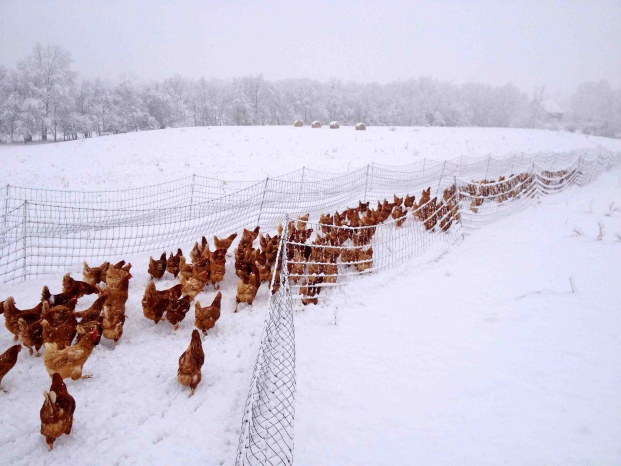
Content
Types of laying hens diseases in winter
The harsh winter time tests the strength of not only humans, but also domestic chickens. With the first frosts, the poultry ration begins to deteriorate, the conditions in the chicken coop.It is winter, weakening the body and reducing immunity, that causes the growth of various diseases in poultry. So what is the problem with laying hens in winter?
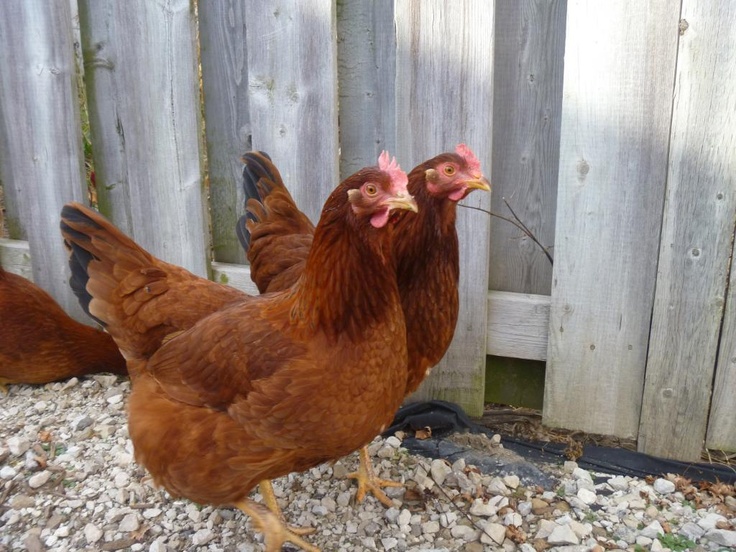
Types of diseases inherent in layers:
- colds (caused by cold, drafts, reduced immunity);
- infectious (transmitted by viruses or bacteria);
- non-infectious (provoked by poor care);
- parasitic (transmitted by contact with infected birds, animals).
Poultry houses containing laying hens should be well aware of the symptoms of diseases in chickens that occur in winter and the methods of their treatment. But it is important to know that you should not independently diagnose diseases and identify symptoms from photographs. It is better to consult a veterinarian for an accurate diagnosis. In any case, it is necessary to carefully monitor the livestock and, at the first suspicion, do not delay with therapy.
Video: diseases of laying hens in winter.
The main colds and infectious diseases in laying hens in winter
There are several of the most common diseases that laying hens are exposed to during the winter. Let's talk in more detail about each of the diseases.
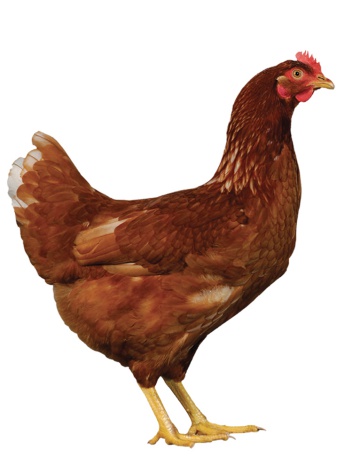
Laryngotracheitis
It is a fairly common infectious disease that can quickly infect all of the laying hens. Usually, outbreaks of the disease in laying hens occur with the arrival of the cold season. The increased humidity and low temperature in the hen house create comfortable conditions for the virus.
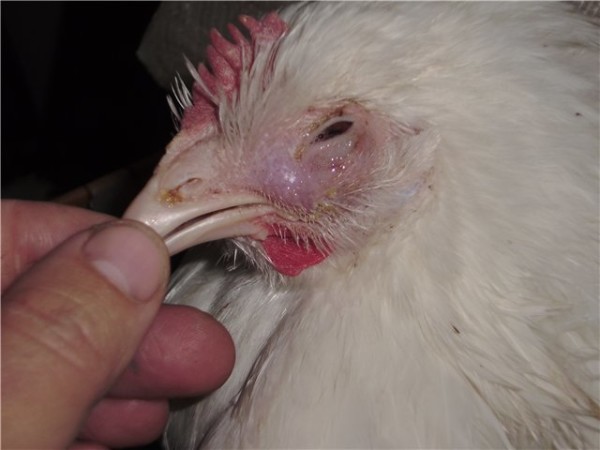
Transmitted by airborne droplets, the virus multiplies in the mucous membrane of the respiratory system and the cloaca of the chicken, causing irritation, swelling and inflammation.
Laryngotracheitis symptoms:
- birds become sedentary, sit ruffled and closed their eyes;
- the breathing of the laying hen becomes noisy, hissing, wheezing is heard;
- egg production falls;
- the mucous membranes of the respiratory system become inflamed;
- the area of the beak and eyes become blue;
- conjunctivitis begins.
Infectious laryngotracheitis is treatable. Thromexin copes with it quite successfully. On the first day, 2 g is applied, and on the next day, 1 g per liter of water. The drug should be given to the complete recovery of the sick bird, subsequently vaccinating the entire livestock.
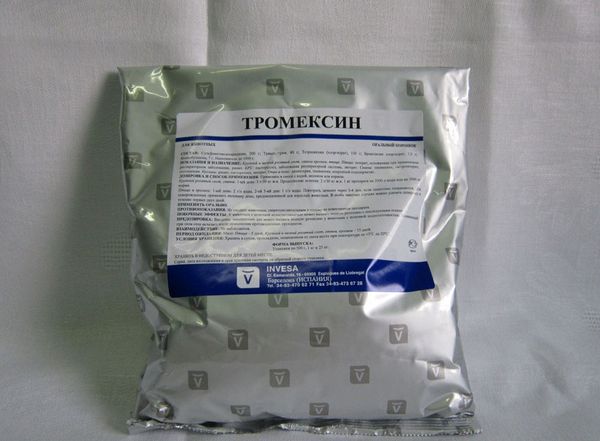
Bronchopneumonia
Bronchopneumonia in layers can begin as an independent disease or be a consequence of a cold and inflammation of the bird's bronchi.
Signs of bronchopneumonia in laying hens are:
- lethargy and lethargy of the bird;
- heavy, noisy breathing with hissing and wheezing;
- cough;
- runny nose with constantly secreting mucus, which dries up, further blocking breathing;
- the possible appearance of conjunctivitis;
- complete refusal to eat.
A bird often suffering from bronchopneumonia spends the whole day lying down, not paying attention to what is happening around. Such chickens are subject to complete isolation from the rest of the livestock. Inflammation of the bronchi is unpleasant, but not the most serious disease. Most of the poultry houses are quite effective and without loss of livestock overcome the disease.
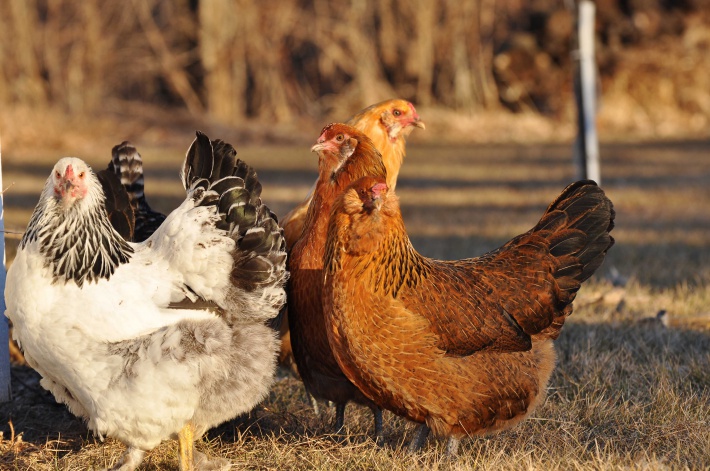
Treatment of bronchopneumonia disease in layers:
- They clean the coop well and spray Ashpiseptol.
- After agreeing the dosage with the veterinarian, the bird is given Norfloxacin, Terramycin, or Penicillin.
- Vitamin and mineral supplements, nettle broth are added to the feed.
- Alcohol tincture of ginseng, a mixture of mummy (1 gram) with honey (20 grams) helps well.
The main prevention against the disease is the observance in the hen house of optimal air humidity and a comfortable temperature regime.
Frostbite
Staying in the cold for a long time can lead to frostbite. The first thing to suffer is the toes, comb and earrings. Light frostbite causes the affected areas to turn pale and then turn blue. In more severe cases, the blood supply is disrupted, the affected tissues blacken and die.
note: Rubbing and treating the affected areas with petroleum jelly or goose fat helps to reduce the effects of frostbite in poultry.
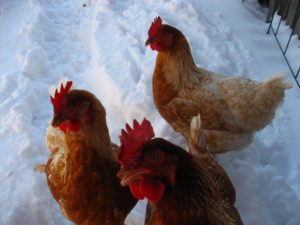
Important! You can let the hens go for a walk in winter on a sunny, not frosty day. The bird should not be outside for more than two hours.
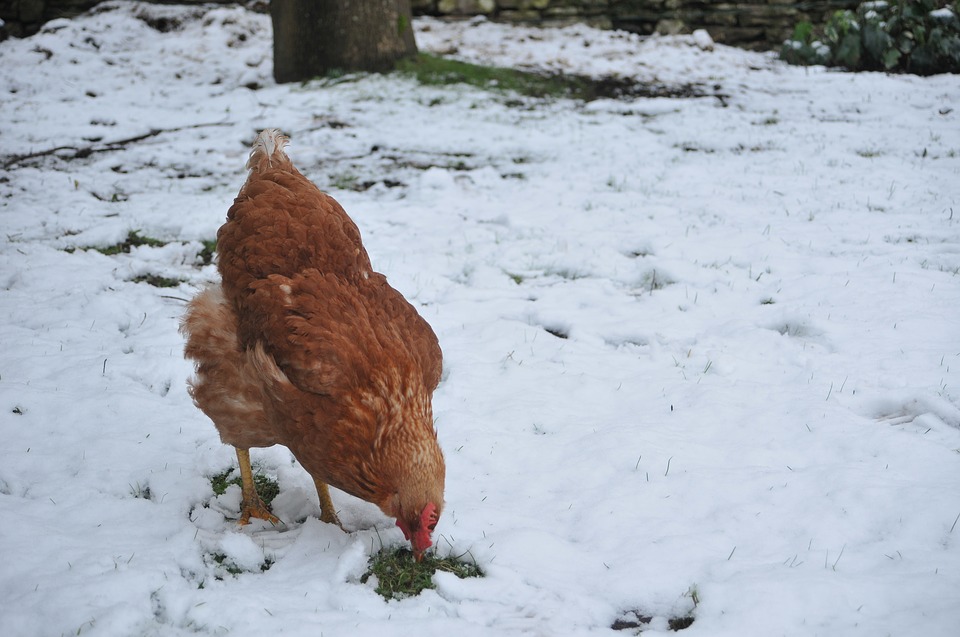
Pullorosis
Chicken typhus or white diarrhea, a common infectious disease affecting the intestines of laying hens in winter. The incubation period of the disease lasts from 1 to 5 days.
Pullorosis symptoms:
- Laying hens refuse food.
- They become weak and inactive.
- An increase in body temperature up to 44 ° C is observed.
- The bird suffers from liquid diarrhea with a pronounced whitish bloom.
Infection with pullorosis occurs by airborne droplets, through food. In the droppings of sick poultry, the causative agent of chicken typhus - Salmonella pullorum, remains active for several months.
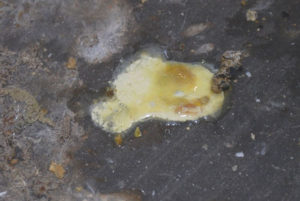
Treatment of pullorosis in laying hens:
- isolate sick birds from healthy livestock;
- conduct a weekly course of treatment with sulfa drugs, at the rate of half a gram per hen.
Also, tetracycline, biomycin, furazolidone help in the fight against the disease. If antibiotics do not help, all infected birds are destroyed by completely disinfecting the chicken coop.
Note! A chick hatched from an egg laid by an infected hen is also a carrier of pullorosis and in most cases becomes ill immediately after birth.
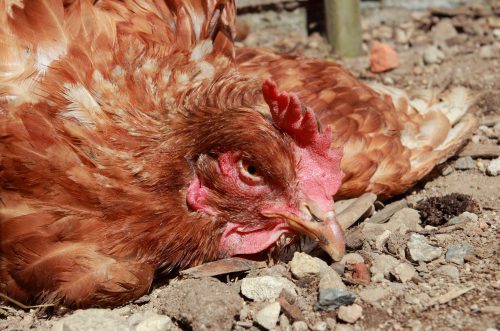
Colibacillosis
A disease that affects all poultry can be dangerous to humans. In chickens and juveniles, it passes in a very acute stage. In adult laying hens it becomes chronic.
The pathological process caused by Escherichia coli has the main effect on the lungs of birds. When sick people move, loud, hoarse breathing is clearly audible.
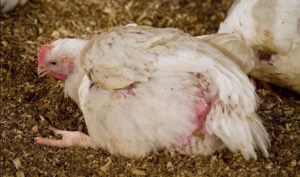
Symptoms of colibacillosis in layers:
- weakness, lethargy and apathy of a sick bird;
- increased body temperature;
- diarrhea and loss of appetite;
- shortness of breath;
- the bird tries to sit on its paws all the time;
- strong, constant thirst, chickens begin to drink much more water.
Important! In the chronic stage in adults, the symptoms of the disease become blurred and only an experienced veterinarian can diagnose colibacillosis.
The following drugs help to cure the disease:
- Sarafloxalin;
- Enrofloxacin;
- Ampicillin.
The dosage prescribed by the veterinarian is mixed with the feed. Having cured the bird, it is necessary to thoroughly clean and disinfect the chicken coop.
Salmonellosis
Salmonella transmitted by the bacterium through droppings, feed, eggs, the disease affects the internal organs of the chicken. The disease is dangerous to humans, getting into the body after eating chicken eggs from an infected laying hen. The salmonella bacteria are killed by heat treatment.
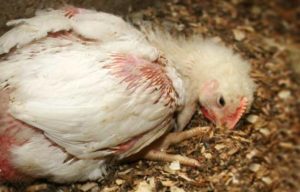
Disease symptoms:
- loss of appetite, weakness and apathy;
- labored breathing;
- watery eyes and discharge of pus from the eyes;
- frothy feces;
- lameness, unsteady gait;
- swelling and inflammation of the cloaca, peritoneum.
In the last stage of salmonellosis, the chicken stops walking and lies on its back or side.
Treatment of sick layers is carried out with the help of:
- Sulfanilamide;
- Biomycin;
- Chloramphenicol;
- Tetracycline;
- Chlortetracycline.
The chicken coop must be disinfected. Healthy laying hens are removed from the sick livestock by soldering with water with the addition of chloramphenicol or potassium permanganate.
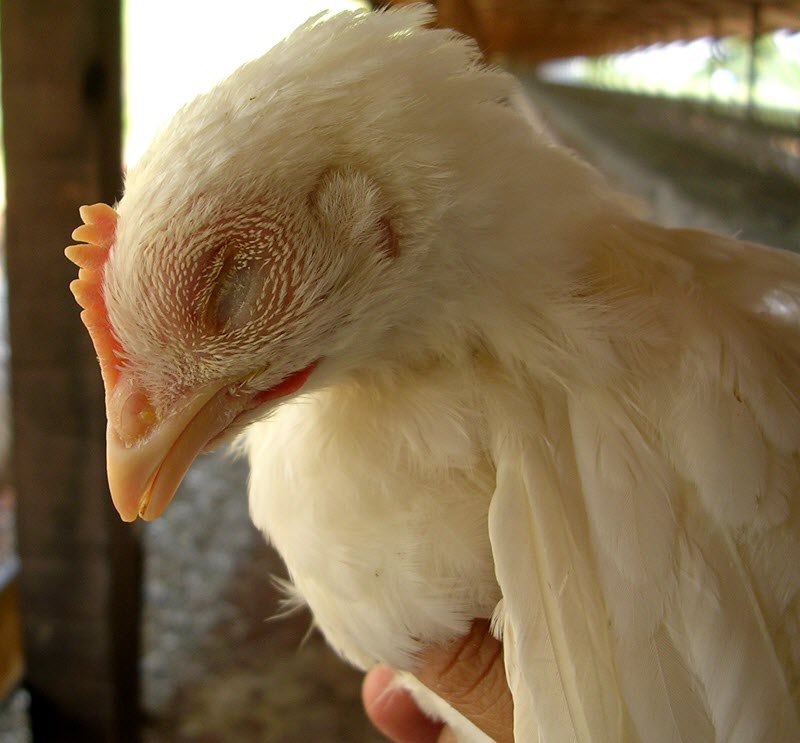
Diseases that develop from malnutrition
Normal nutrition is the key to good and excellent health, not only in humans. Any animal or bird also needs a complete diet. And laying hens are also very sensitive to malnutrition. It is worth considering what are the diseases in laying hens associated with malnutrition in winter, as well as their treatment.
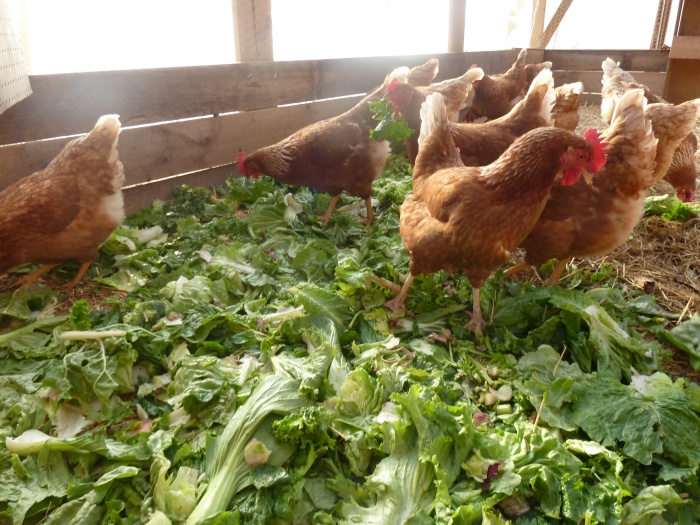
Gastroenteritis
The disease of gastroenteritis in layers causes:
- Poor dietary balance.
- Poor quality feed, lack of fresh food, vitamins.
- Poor conditions of detention, lack of hygiene in the chicken coop.
The disease inflicts the main blow on the digestive system of the laying hen, irritating and inflaming the mucous membranes.
Signs of gastroenteritis:
- depression and lethargy look unhealthy;
- refusal of food, decreased egg production;
- ruffled plumage;
- diarrhea.
Due to the similarity of symptoms with other diseases, only an experienced poultry house or veterinarian can make the correct diagnosis.
Important! Only by excluding the possibility of an infectious disease in a bird, it is worth starting to treat gastroenteritis.
Therapy consists in improving the quality of food, eliminating imbalances in the diet. To rid chickens of diarrhea in winter they give a solution of potassium iodide to disinfect the digestive system of the hen.
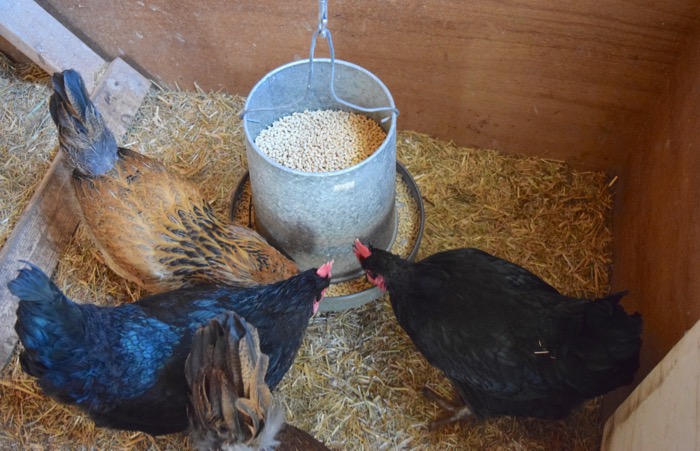
Avitaminosis
The disease begins to develop from a lack of vitamins and minerals in the diet of poultry, juicy feed. The problem is mainly affected by birds kept in cages, as well as not receiving balanced food during the winter season.
Signs of vitamin deficiency:
- weight and feather loss;
- lethargy and weakness;
- upset and improper bowel function;
- conjunctivitis;
- swelling of the joints;
- pale color of the comb and earrings.
With advanced diseases, irreversible changes occur in the chicken's body and it can be quite difficult to completely cure it. In other cases, poultry is quickly helped by the introduction of balanced mash, vitamin and mineral supplements, and juicy feed into the diet. In winter, hens should be given hay, shell rock and chalk.
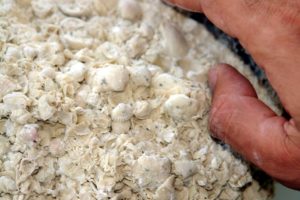
Goiter atony
Feeding hens with low-grade, dry food can lead to settling and retention in the crop. Overflow prevents further passage of food. Clogged, it becomes significantly larger and makes breathing difficult for the bird. Complex cases are usually fatal.
Note! The disease is revealed by a sagging, hardened, enlarged goiter.
The disease is treated quite easily. After introducing 40 g of vegetable oil into the crop, a light massage of the hardened feed is done. After a while, the goiter can be cleaned out on its own and the chicken can be drunk with a weak solution of potassium permanganate.
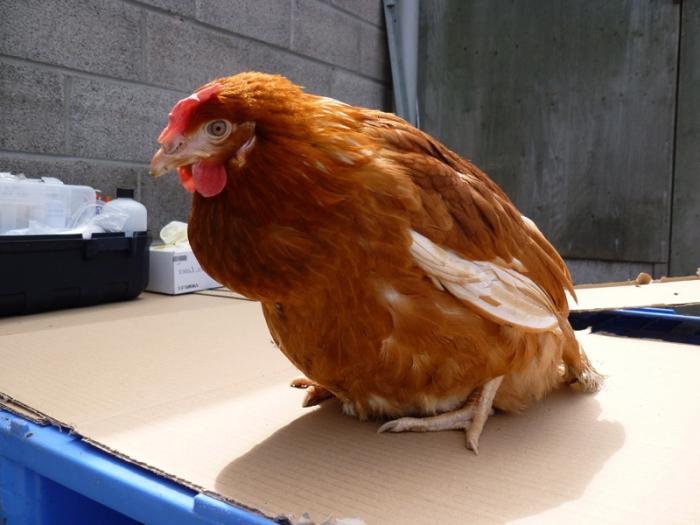
Salpingitis
Disease causing inflammation of the laying hen's oviduct is triggered by poor and unbalanced feed. Most poultry houses encounter this disease in chickens during the winter and when keeping hens in cages. Lack of treatment results in complete prolapse of the oviduct.

Signs of salpingitis:
- decreased egg production, often eggs are without shell;
- feeling unwell, lethargy;
- on palpation, abdominal distension is felt;
- the chicken moves by dragging its feet.
When the first symptoms occur, treatment should be started immediately. Vaseline is introduced into the cloaca of the hen. After consulting a veterinarian, antibiotics are used, and sinestrol injections are given. At this stage, it is very important to fortify and balance the nutrition of the laying hen. The diet should contain fresh feed, shell rock, chalk.
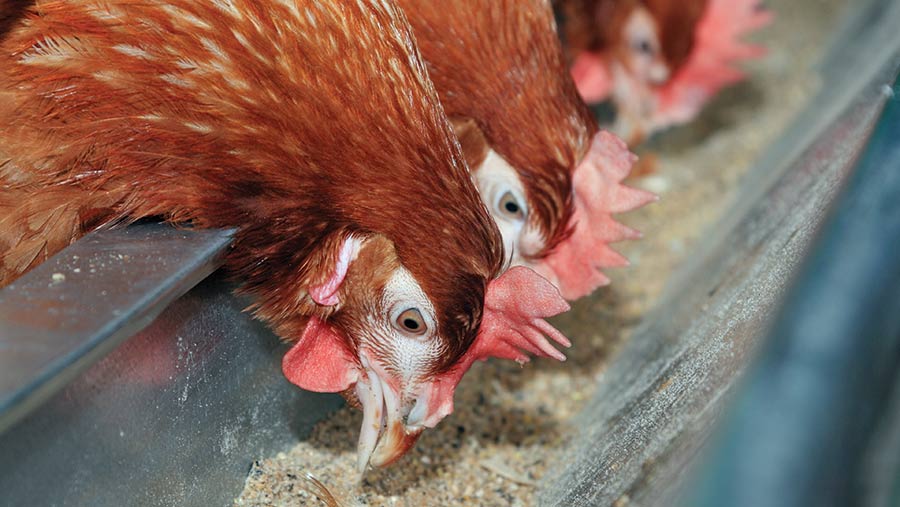
Arthritis
If chickens have leg pain in winter and they often fall on them, then it is quite possible that this is arthritis. The disease affects the joints of the paws of laying hens, reducing vital activity, which negatively affects egg production.
A swollen, inflamed joint does not allow the bird to stand on a sore leg, makes it limp when moving. The development of the disease is usually caused by poor diet and cold, damp bedding of the chicken coop.
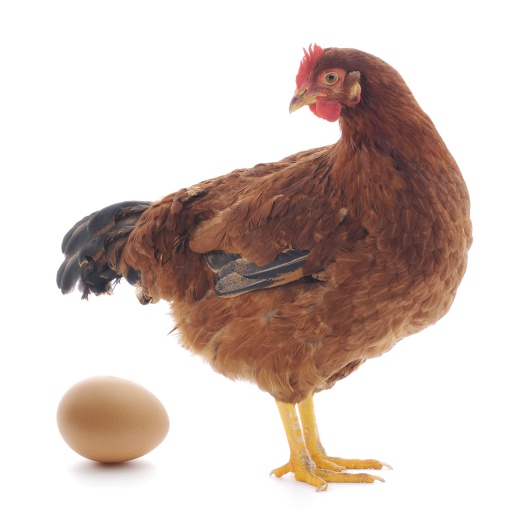
It is necessary to start treatment by eliminating the causes that led to the appearance of the disease:
- Create a comfortable temperature regime in the chicken coop.
- Lay the floor with a dry, clean mat.
- Improve and diversify the diet of feathered livestock.
- Drug treatment must be carried out in a comprehensive manner, including antibiotics and antiviral drugs. Depending on the inflammation of the joints, veterinarians prescribe Sulfadimethoxin, Ampicillin or Polymyxin.
Having taken up the treatment in time, the poultry houses quickly put the layers on their feet.
Prevention of diseases of laying hens in winter
Preparing for winter keeping of hens you need to start practicing long before the first cold weather. It is necessary to prepare a chicken coop, to stock up on a varied food base.
Measures for the prevention of chicken diseases in winter:
- provide varied, nutritious food;
- exclude contact of birds with carriers of infections;
- maintain a favorable temperature regime;
- eliminate stress in the bird;
- control air humidity;
- eliminate drafts in the room;
- monitor the quality of the litter on the floor;
- to provide the bird with a parchal;
- keep equipment, feeders and drinkers clean.
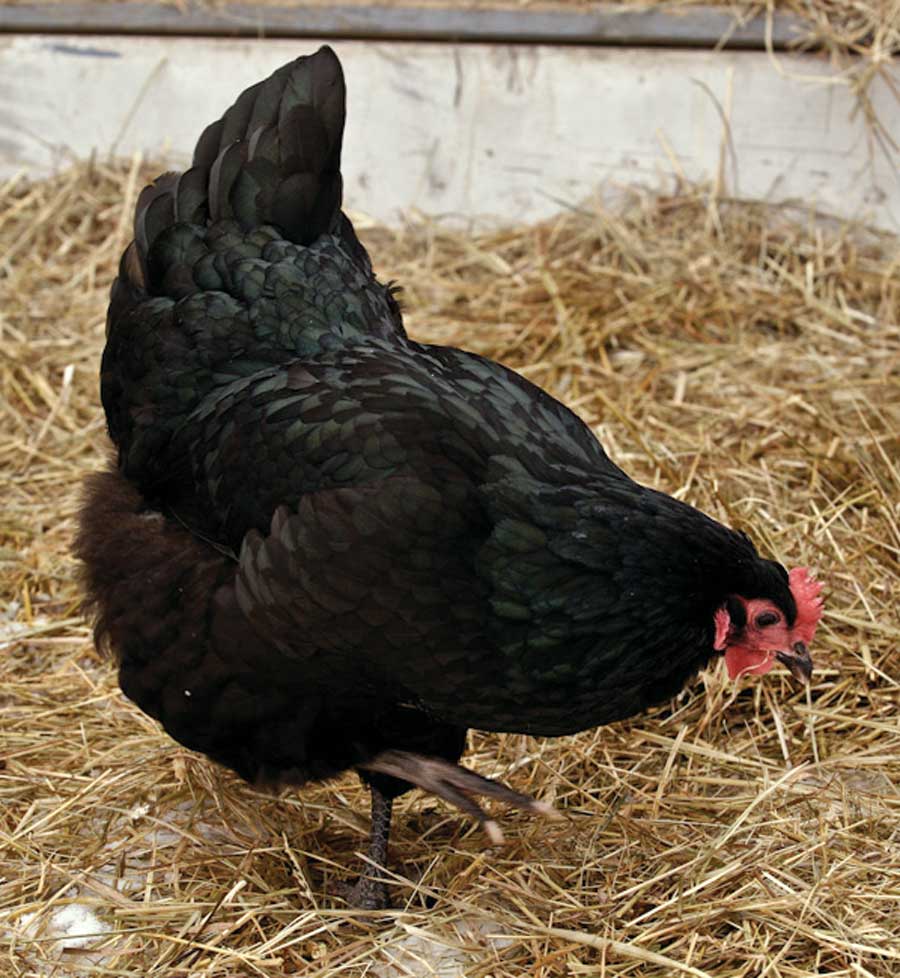
Compliance with these simple requirements will avoid many problems with feathered pets in winter. Having noticed the slightest changes in the behavior of the layers, start taking the necessary measures immediately. For this, it is necessary to be aware of all diseases of laying hens in winter and methods of their treatment.
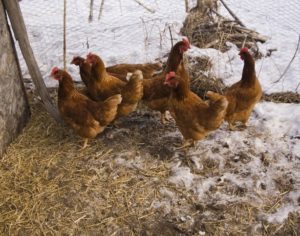
Statistics inexorably assert that some laying hen breeders are constantly faced with diseases leading to the death of the entire herd. Others have never encountered this problem. The conclusion is very clear - basically the health and egg production of birds depends on the poultry house. By providing the bird with proper nutrition and care, you can avoid illness in the hen house in the winter and get plenty of fresh, homemade eggs.
You can watch a video about chicken diseases, which is just below. It will talk in general about diseases that can occur in chickens:

